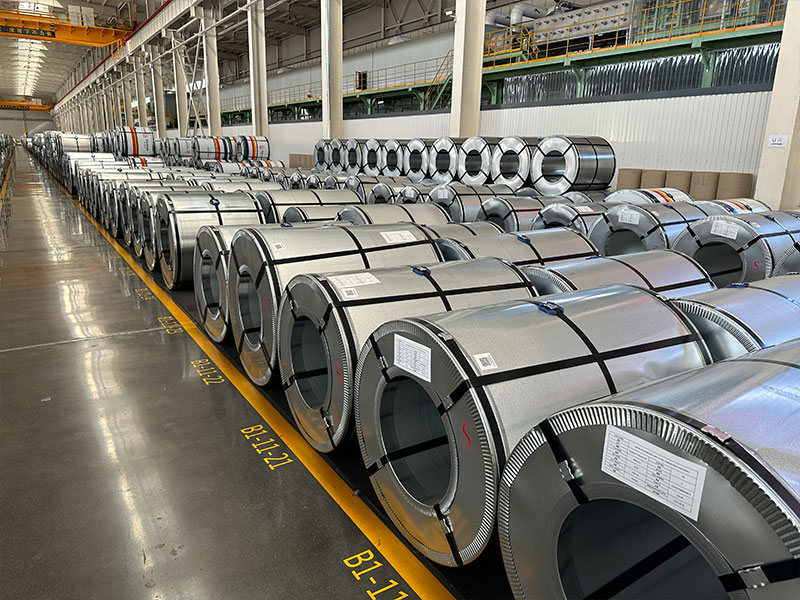Understanding the Importance of Steel in Vehicle Construction
Why Steel is Essential for Automotive Manufacturing
Steel has been the backbone of automotive manufacturing for over a century. Its unique combination of strength, durability, and affordability makes it an unmatched material for constructing vehicle frames, bodies, and various components. High-performance steel can be engineered to meet specific demands, providing a balance of lightweight properties without sacrificing safety and structural integrity. Furthermore, steel is highly recyclable, making it an eco-friendly choice in an industry that increasingly values sustainability.
The versatility of steel enables automakers to design vehicles that can withstand extreme conditions and impacts, enhancing both performance and passenger safety. This adaptability ensures that the material can be tailored to high-performance sports cars as well as heavy-duty trucks. In essence, steel serves as the foundation of modern automotive excellence by offering a reliable, cost-effective solution that meets the stringent demands of contemporary vehicle engineering.
Key Factors Driving the Choice of Steel in Vehicles
When it comes to selecting the right type of steel for vehicle construction, automakers consider several critical factors. First, the mechanical properties such as tensile strength, ductility, and toughness are of paramount importance. These properties ensure that the steel can handle the stresses and strains of daily driving as well as severe impact situations. Cost-effectiveness is another vital aspect; steel offers a significant advantage by balancing performance with affordability, which is crucial for both manufacturers and consumers.
Advances in automotive technology have also led to a push for improved fuel efficiency and reduced emissions. Lightweight steel variants, designed through innovative metallurgy, help achieve these goals without compromising safety. Lastly, ease of fabrication and manufacturing processes are key factors. Automakers prefer steel types that can be easily welded, stamped, and shaped to streamline production while reducing costs. Thus, the choice of steel hinges on meeting stringent performance, economic, and environmental criteria.
Different Types of Steel Utilized in Vehicle Construction
High-Strength Low-Alloy (HSLA) Steel
Characteristics of HSLA Steel
High-Strength Low-Alloy (HSLA) steel is known for its exceptional strength-to-weight ratio. It achieves this through the addition of specific alloying elements like titanium, vanadium, and niobium in small quantities. These elements enhance the mechanical properties of the steel without significantly increasing its weight. HSLA steel demonstrates superior toughness and resistance to atmospheric corrosion, which are vital for automotive applications. The steel’s microstructure is optimized through precise control during the manufacturing process, resulting in a material that can perform under high stress and over prolonged periods.
Moreover, HSLA steel offers excellent weldability and formability, which facilitates easier incorporation into the complex shapes and structures required in vehicle design. This steel type also maintains its strength at elevated temperatures, further broadening its applicability in different vehicle parts. The balance of enhanced properties and reduced weight makes HSLA steel an efficient choice for automakers aiming to improve vehicle performance while ensuring safety and durability.
Applications of HSLA in Vehicle Parts
HSLA steel finds extensive use in various critical components of a vehicle. It is commonly employed in the construction of chassis, which requires high strength to maintain structural integrity and support the vehicle’s load. The material’s excellent toughness and lightweight properties make it ideal for body panels and frame structures. These applications not only enhance the vehicle’s durability but also help improve fuel efficiency by reducing overall weight.
In addition, HSLA steel is often used in suspension systems and sub-frames. Its ability to endure high stress while maintaining flexibility ensures a smoother ride and better handling. The steel’s superior corrosion resistance also makes it suitable for underbody components exposed to harsher environmental conditions, such as salt and moisture. In essence, the versatile nature of HSLA steel allows it to be utilized in multiple vehicle parts, contributing significantly to both performance and longevity.
Advanced High-Strength Steel (AHSS)
Overview of AHSS Properties
Advanced High-Strength Steel (AHSS) represents a significant leap in steel technology, combining high strength with enhanced formability. This category of steel employs complex microstructures achieved through advanced alloying techniques and heat treatments. AHSS typically includes phases like martensite, bainite, and retained austenite, which provide excellent mechanical properties. These steels show high tensile strength, making them capable of absorbing more energy during collisions, thus improving the vehicle’s crashworthiness.
The improved ductility of AHSS allows it to be manufactured into complex shapes without cracking, which is crucial for modern vehicle designs that emphasize aerodynamics and aesthetics. Additionally, AHSS offers an excellent balance of strength and weight, which contributes to better fuel efficiency and reduced emissions. This efficiency does not come at the cost of safety, as AHSS is engineered to maximize resistance to deformation and impact.
Contributions to Safety and Performance
AHSS plays a pivotal role in enhancing both the safety and performance of modern vehicles. The high tensile strength ensures that the steel can absorb significant amounts of energy during a collision, thereby protecting the occupants by maintaining the structural integrity of the vehicle. This makes AHSS a preferred material for constructing safety-critical zones, such as crumple zones, door beams, and pillars.
Moreover, AHSS enhances vehicle performance by offering a lightweight alternative to traditional steel, which improves fuel efficiency and handling characteristics. The material’s superior formability allows for the creation of intricate designs, contributing to both the aesthetic appeal and aerodynamic efficiency of modern cars. This blend of high strength, excellent formability, and lightweight attributes positions AHSS as a crucial material in the ongoing evolution of automotive technology.
Specific Uses in Modern Vehicles
AHSS is increasingly utilized in various critical areas within modern vehicles to maximize both safety and performance. Specifically, AHSS is used in constructing the vehicle’s front and rear crumple zones, designed to absorb energy and minimize passenger injuries during a collision. Doors, pillars, and roof components also incorporate AHSS, providing structural rigidity while reducing overall vehicle weight. Side impact beams made from AHSS further enhance the vehicle’s protective capabilities in the event of a lateral collision.
In addition to safety-critical sections, AHSS is employed in producing intricate shapes used in modern vehicle designs, such as aerodynamic body panels. The blend of high tensile strength and formability allows manufacturers to create aesthetically pleasing, fuel-efficient vehicles without compromising on passenger protection. By leveraging the properties of AHSS, automakers are able to design cars that are both lightweight and exceptionally safe.
Ultra-High-Strength Steel (UHSS)
Defining UHSS and Its Benefits
Ultra-High-Strength Steel (UHSS) is defined by its extraordinary tensile strength, usually exceeding 780 MPa (megapascals), making it one of the strongest materials used in automotive construction. UHSS achieves this high strength through carefully controlled alloying and specialized heat treatments. The primary benefits of UHSS include its ability to significantly enhance a vehicle’s structural integrity and safety performance, especially in critical areas subjected to high stress during collisions.
Another notable benefit of UHSS is its contribution to weight reduction. By using UHSS, manufacturers can design thinner components without sacrificing strength, thereby reducing the vehicle’s overall weight and improving fuel efficiency. Additionally, UHSS offers excellent resistance to fatigue and wear, ensuring long-term durability and reliability. This combination of properties makes UHSS an invaluable material in the production of modern, high-performance vehicles.
Role of UHSS in Enhancing Crash Resistance
UHSS plays a pivotal role in enhancing a vehicle’s crash resistance due to its remarkable ability to absorb and dissipate energy during an impact. The use of UHSS in critical structures such as the A-pillars, B-pillars, and roof rails ensures that the passenger compartment remains intact and deformation is minimized in the event of a collision. This high level of crash resistance directly translates to improved passenger safety and reduced risk of injury.
Moreover, UHSS is often used in the vehicle’s floor and side structures, providing additional reinforcement that is essential for crashworthiness. The advanced properties of UHSS allow these components to withstand significant forces without buckling, effectively protecting occupants from the consequences of severe impacts. As automotive safety standards continue to evolve, the role of UHSS in building resilient vehicles becomes increasingly important.
Typical Components Made from UHSS
Various critical components in modern vehicles are made from UHSS to leverage its high tensile strength and durability. The A-pillars, B-pillars, and roof rails, which are crucial for maintaining the structural integrity of the passenger cabin, are often constructed from UHSS. Additionally, door reinforcement beams and side impact bars use UHSS to enhance protection against side collisions.
Other typical components include the vehicle’s floor panels and rocker panels, which benefit from UHSS’s strength and resistance to deformation. By incorporating UHSS into these key areas, manufacturers ensure that the vehicle meets stringent safety regulations while providing a robust framework that can withstand demanding conditions. The strategic use of UHSS in these components underscores its importance in modern automotive engineering.
The Role of SUNRISE NEW MATERIAL in Automotive Steel Supply
Introduction to SUNRISE NEW MATERIAL’s Contribution to the Industry
SUNRISE NEW MATERIAL has established itself as a premier supplier of innovative steel solutions for the automotive industry. The company specializes in the production and distribution of high-performance steel types ,tailored to meet the specific needs of modern vehicle manufacturing. With a commitment to quality and precision, SUNRISE NEW MATERIAL has become a trusted partner for leading automakers around the globe.
The company’s advanced manufacturing processes and state-of-the-art technology enable it to produce steel with superior properties, ensuring that automotive manufacturers receive materials that enhance vehicle performance, safety, and sustainability. SUNRISE NEW MATERIAL‘s expertise in metallurgical science and its focus on continual improvement make it a key player in advancing automotive steel technology.
Innovative Solutions Provided by SUNRISE NEW MATERIAL
SUNRISE NEW MATERIAL offers a range of innovative solutions designed to address the unique challenges faced by the automotive industry. One of the company’s standout offerings is its suite of customized steel grades, which are engineered to provide optimal performance for specific vehicle components. This tailored approach ensures that materials meet the exact requirements for strength, durability, and weight reduction.
In addition to customized steel grades, SUNRISE NEW MATERIAL provides comprehensive technical support and collaboration services. By working closely with automotive manufacturers, the company helps optimize material selection and integration processes, resulting in improved production efficiency and product quality. SUNRISE NEW MATERIAL also invests in research and development to drive the next generation of steel innovations, further solidifying its position as a leader in automotive steel supply.
Future Trends in Automotive Steel Technology
Emerging Developments in Automotive Steels
The future of automotive steel technology is marked by continuous advancements aimed at enhancing vehicle performance, safety, and sustainability. One emerging trend is the development of new, lightweight steel alloys that offer even greater strength-to-weight ratios. These advanced materials are designed to further reduce vehicle weight, contributing to improved fuel efficiency and reduced emissions.
Another significant development is the integration of smart materials and steels with nano-enhanced properties. These cutting-edge materials exhibit exceptional mechanical characteristics and have the potential to revolutionize automotive design by offering unprecedented levels of strength, hardness, and corrosion resistance. The ongoing exploration of these novel steel technologies promises to push the boundaries of what is possible in vehicle construction.
Sustainability and Efficiency Advancements with New Steels
Sustainability and efficiency are at the forefront of future advancements in automotive steel technology. One key focus is the increased use of recycled materials and the adoption of more energy-efficient manufacturing processes. These initiatives aim to reduce the environmental footprint of steel production, aligning with global efforts to promote sustainability in the automotive industry.
Innovations in steel coating and surface treatment technologies are also contributing to greater efficiency and longevity of vehicle components. Enhanced corrosion resistance and durability mean that vehicles can maintain their performance and aesthetic appeal over longer periods, reducing the need for frequent replacements and repairs. As new steel technologies continue to evolve, they pave the way for more sustainable and efficient automotive manufacturing practices.
In summary, understanding the key types of steel used in vehicle construction—HSLA, AHSS, and UHSS—provides insight into how modern vehicles achieve their performance, safety, and efficiency benchmarks. With companies like SUNRISE NEW MATERIAL driving innovation and emerging trends in automotive steel technology, the future of vehicle construction looks promising, emphasizing strength, sustainability, and advanced engineering.







